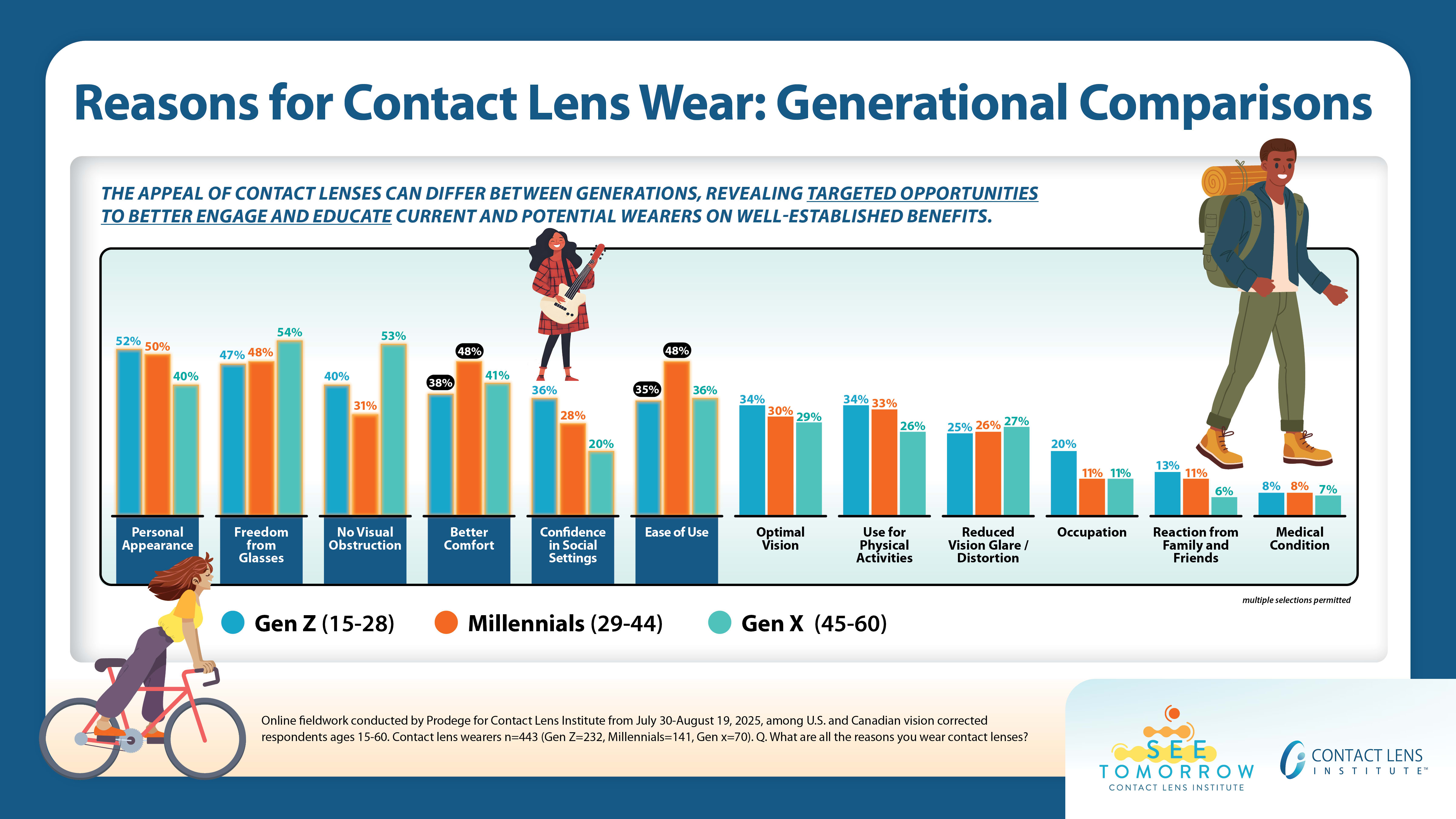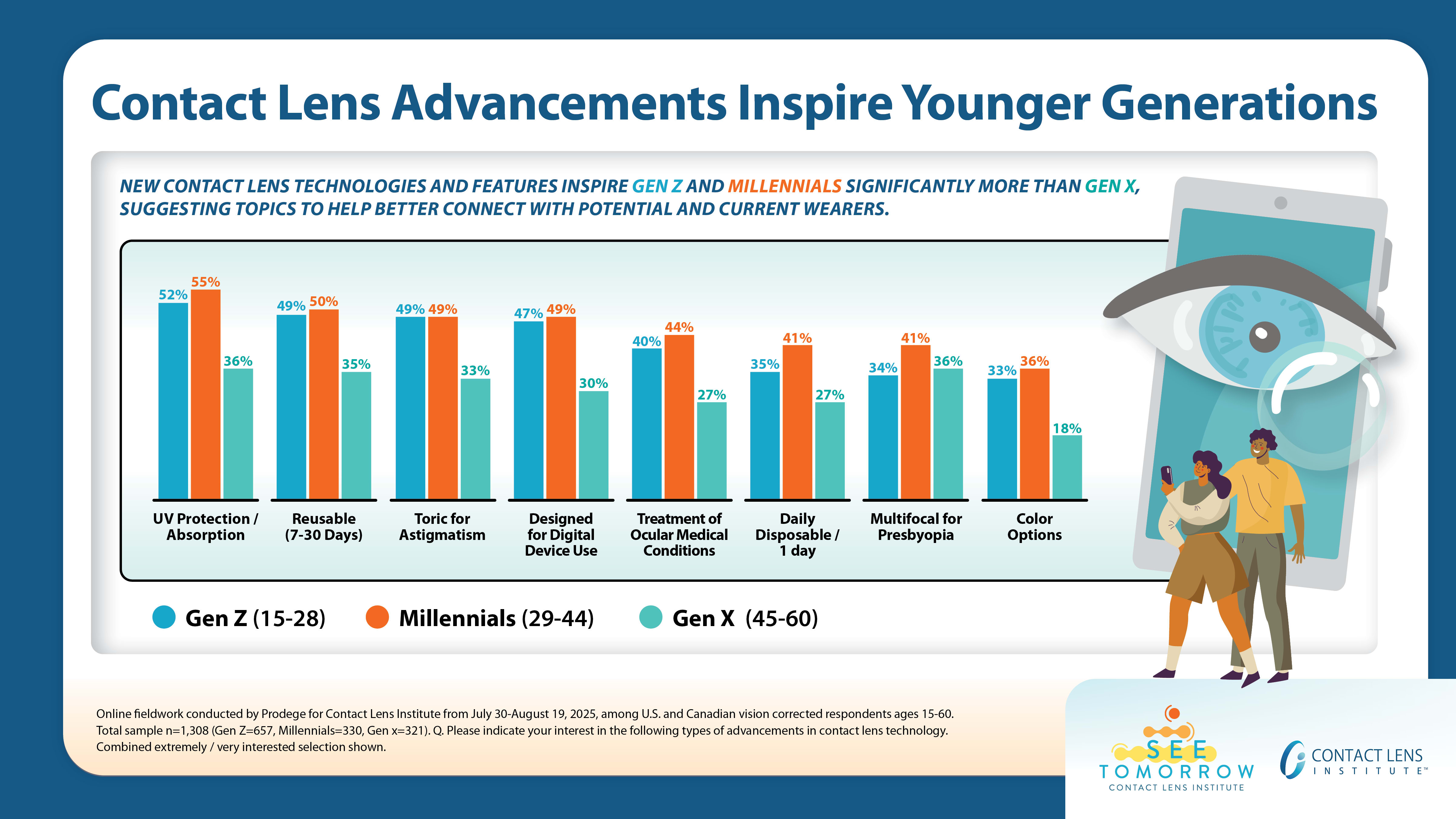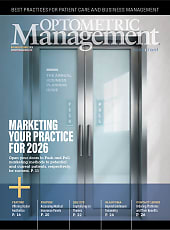
New data from the Contact Lens Institute (CLI) show that motivations for wearing contact lenses and interest in product innovations vary across generations. Part of CLI’s See Tomorrow research initiative, the findings were presented at the 2025 American Academy of Optometry Annual Meeting in Boston following a preview and panel discussion at Vision Expo West.
The study surveyed 1,308 vision-corrected respondents in the U.S. and Canada across three generations—Generation Z (ages 15-28), millennials (ages 29-44), and Generation X (ages 45-60). Results indicate that while appearance and freedom from glasses are common reasons for contact lens wear across all age groups, the relative importance of comfort, convenience, and technology differs by generation.

Among current wearers, Gen Z respondents most often cited personal appearance (52%), freedom from glasses (47%), and a lack of visual obstruction (40%) as reasons for use. Millennials prioritized appearance (50%), freedom from glasses (48%), and both comfort and ease of use (48%). Gen X participants emphasized freedom from glasses (54%), reduced obstruction (53%), and comfort (41%). Notably, Gen Z respondents rated comfort and ease of use lower than millennials, suggesting opportunities for practitioners to address these factors in discussions with younger patients.
Across all generations, “optimal vision” ranked only midrange as a motivation, highlighting the role of lifestyle and aesthetic factors in contact lens adoption and retention.
The study also examined attitudes toward product advancements. Younger respondents—particularly Gen Z and millennials—showed stronger interest in innovations such as UV protection, reusable lenses, toric designs, and lenses optimized for digital device use. Interest among Gen X respondents was lower overall, though multifocal lenses for presbyopia drew comparable attention to UV protection.

“It’s clear that contact lens wearing motivations can differ by age. Understanding what influences Gen Z, millennials, and Gen X should help the eyecare community better attract new contact lens patients and more effectively retain current patients through targeted communication and education,” says Stan Rogaski, CLI’s executive director.
Comprehensive findings from CLI’s See Tomorrow research program will be published later this year. Additional insights and downloadable infographics are available here.



